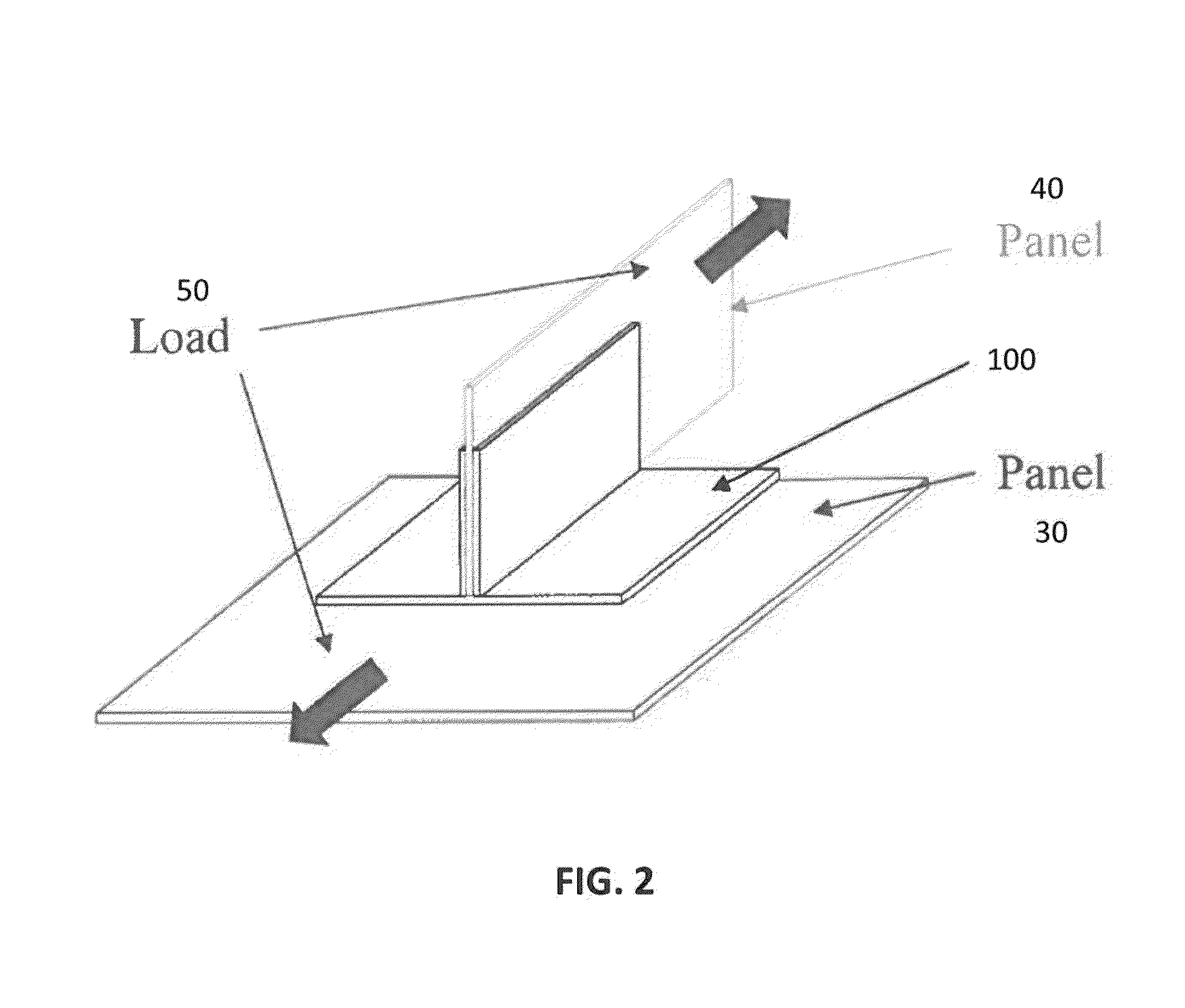Pi-shaped preform with bias fibers
a fiber and bias technology, applied in the field of woven preforms, can solve the problems of introducing differences in the thermal expansion coefficient, the inability to use metal bolts or rivets at the interface of such components, and the “peel” for
- Summary
- Abstract
- Description
- Claims
- Application Information
AI Technical Summary
Benefits of technology
Problems solved by technology
Method used
Image
Examples
Embodiment Construction
[0038]The terms “fibers” and “yarns” are interchangeably used in the following description. However, “fibers” and “yarns” as used herein can refer to monofilaments, multifilament yarns, twisted yarns, multifilament tows, textured yarns, braided tows, coated yarns, bicomponent monofilament yarns, as well as yarns made from stretch broken fibers.
[0039]Turning now to FIG. 4, the Pi preform 300 according to the present invention can be woven on any conventional weaving machine 215. FIG. 4, for example, is a top view of a weaving machine 215 with the preform 300 still on the machine in an “as-woven” form before the woven fabric is taken off the loom. The vertical lines in fabric 300 represent warp fibers or yarns 312, and the horizontal lines represent weft fibers or yarns 314. While carbon fiber is preferred, the warp and / or weft fibers can practically be any other fiber type, such as for example, glass, ceramic, aramid, polyethylene, polypropylene etc, or a combination thereof.
[0040]Pr...
PUM
| Property | Measurement | Unit |
|---|---|---|
| Angle | aaaaa | aaaaa |
| Length | aaaaa | aaaaa |
| Width | aaaaa | aaaaa |
Abstract
Description
Claims
Application Information
 Login to View More
Login to View More - R&D
- Intellectual Property
- Life Sciences
- Materials
- Tech Scout
- Unparalleled Data Quality
- Higher Quality Content
- 60% Fewer Hallucinations
Browse by: Latest US Patents, China's latest patents, Technical Efficacy Thesaurus, Application Domain, Technology Topic, Popular Technical Reports.
© 2025 PatSnap. All rights reserved.Legal|Privacy policy|Modern Slavery Act Transparency Statement|Sitemap|About US| Contact US: help@patsnap.com



